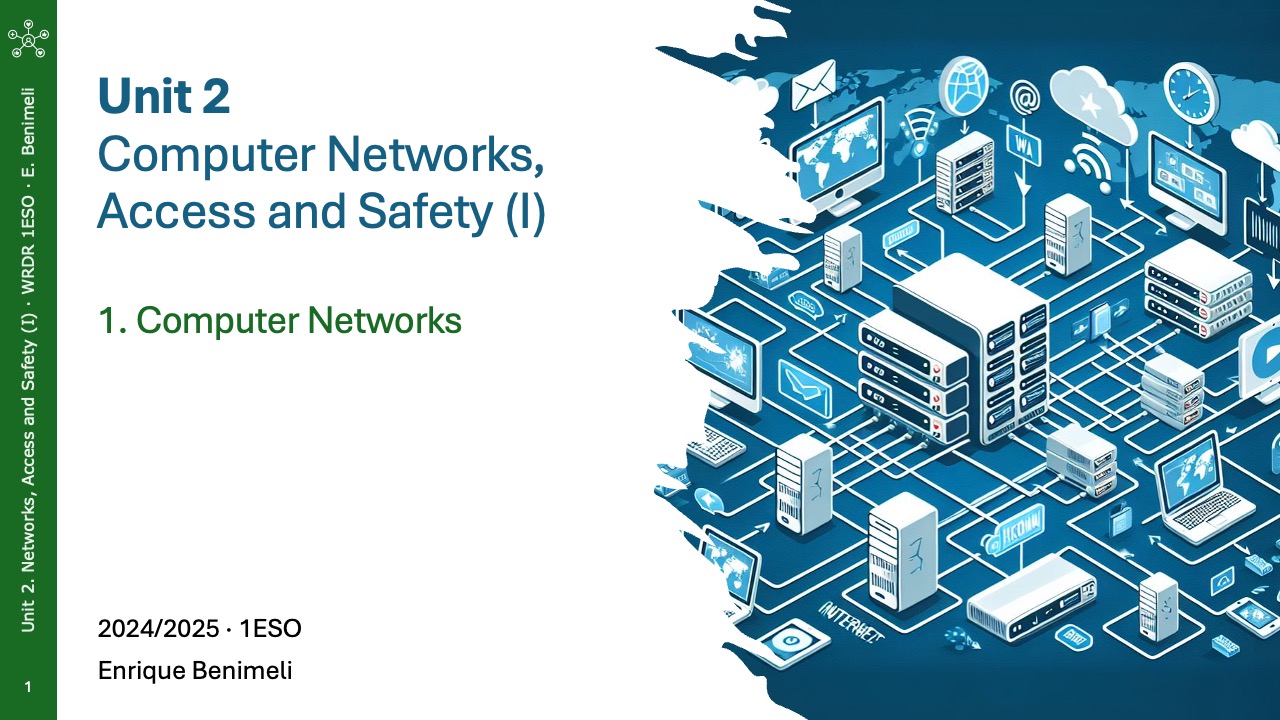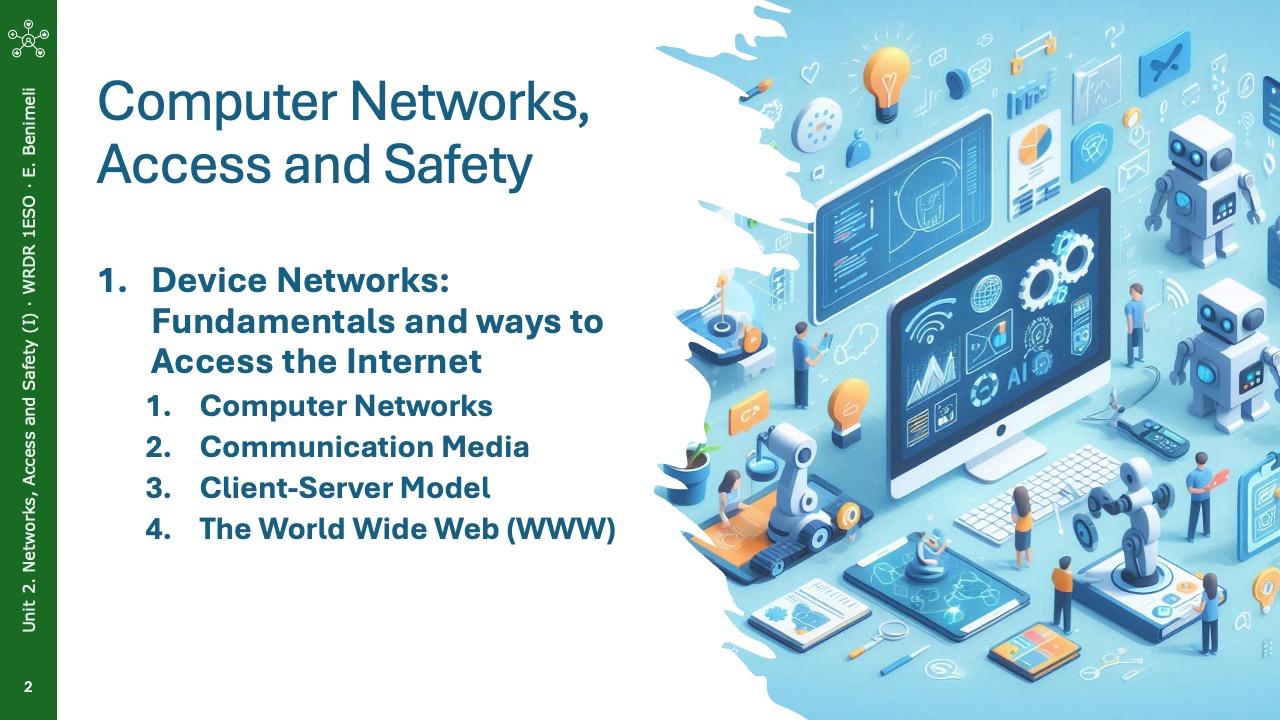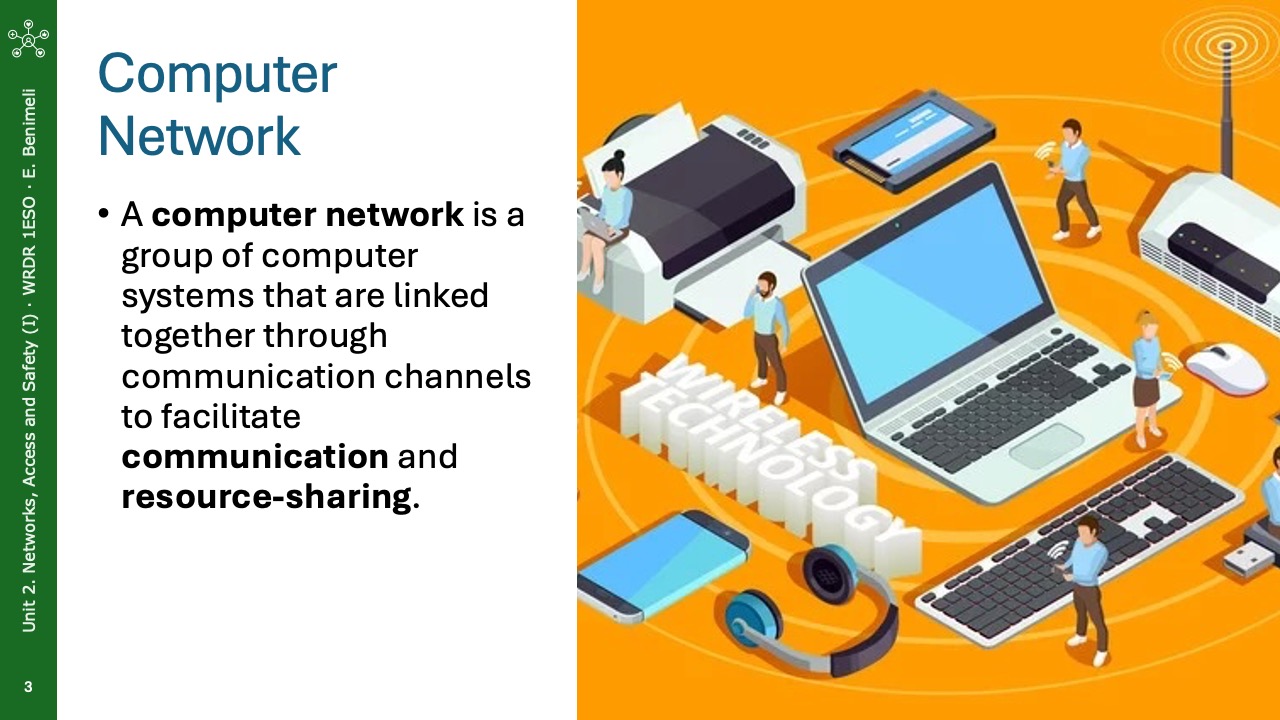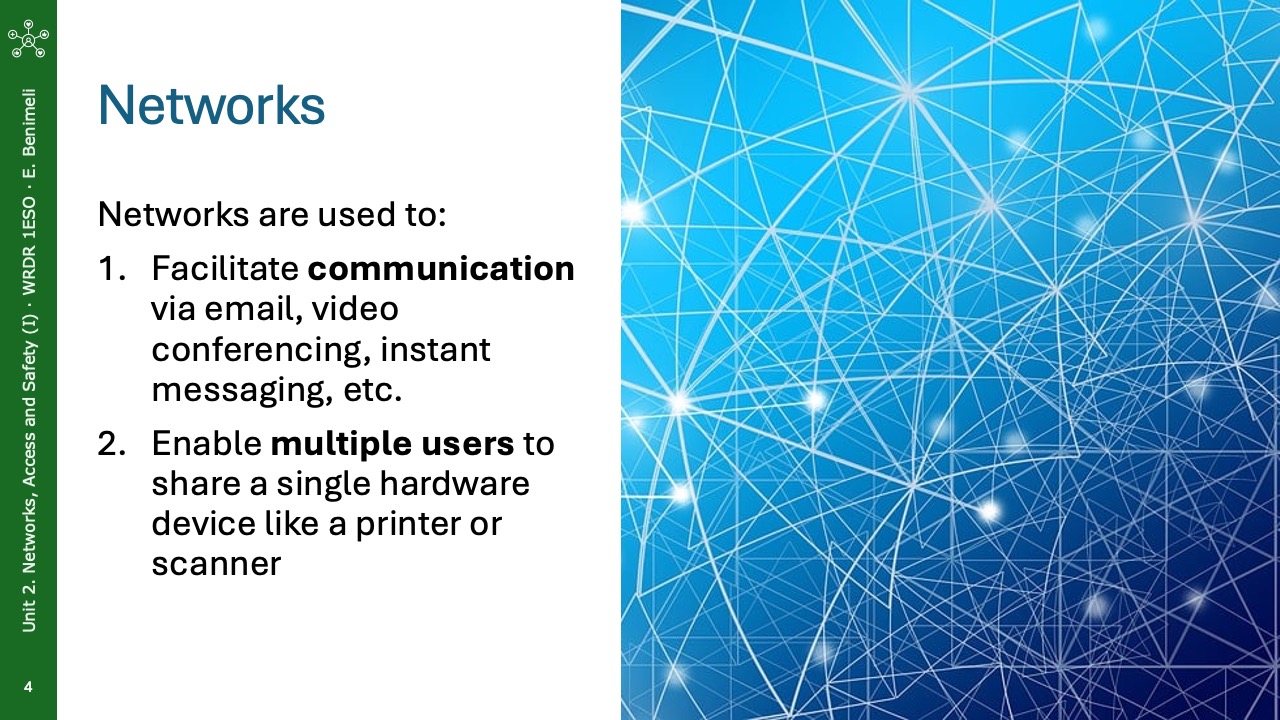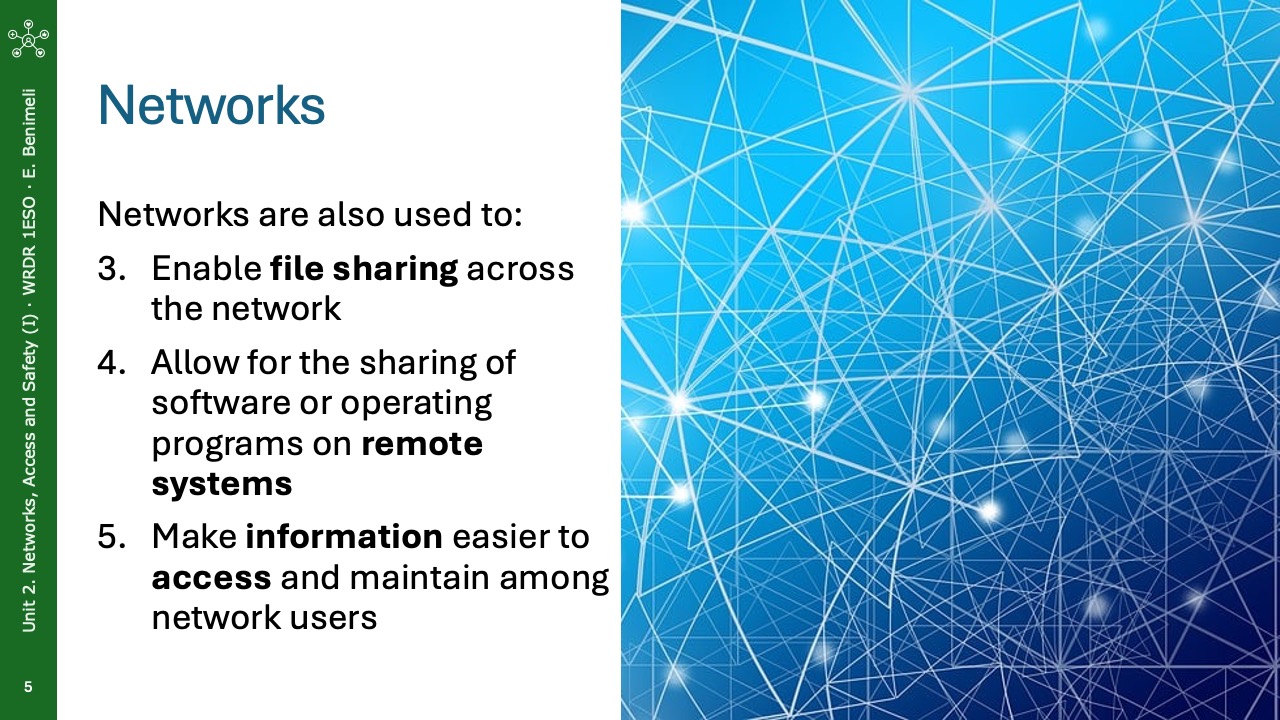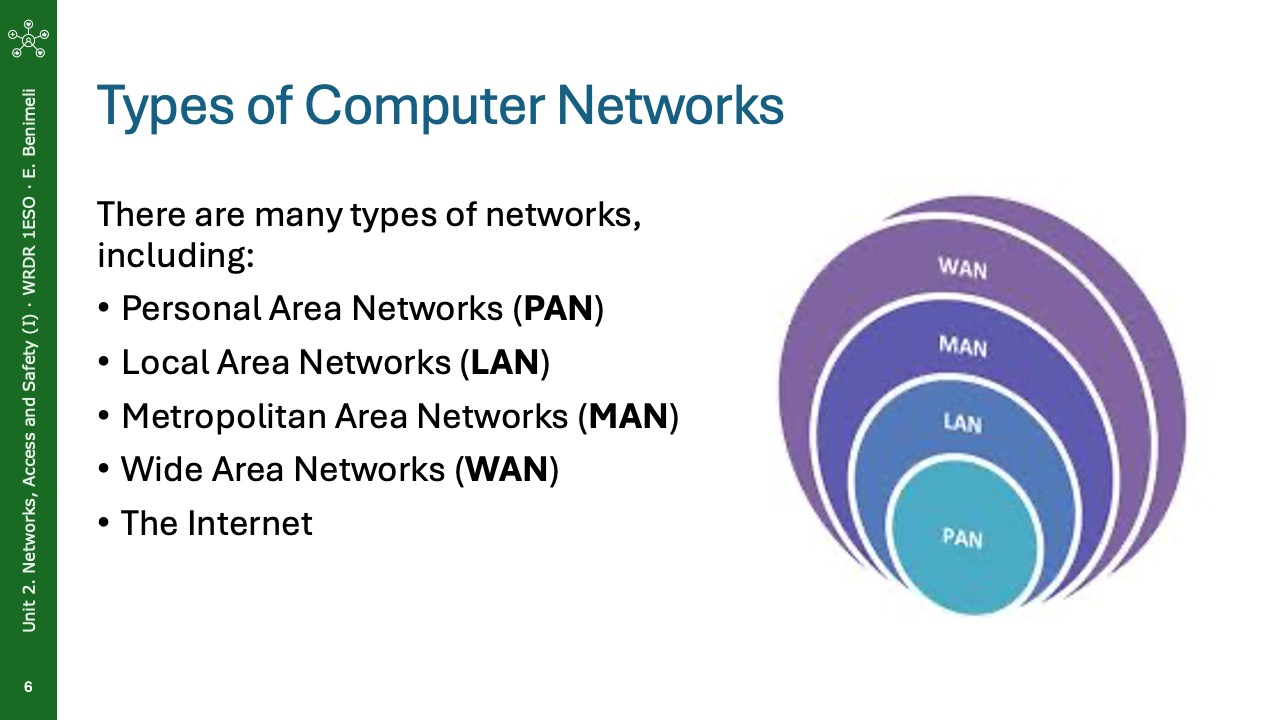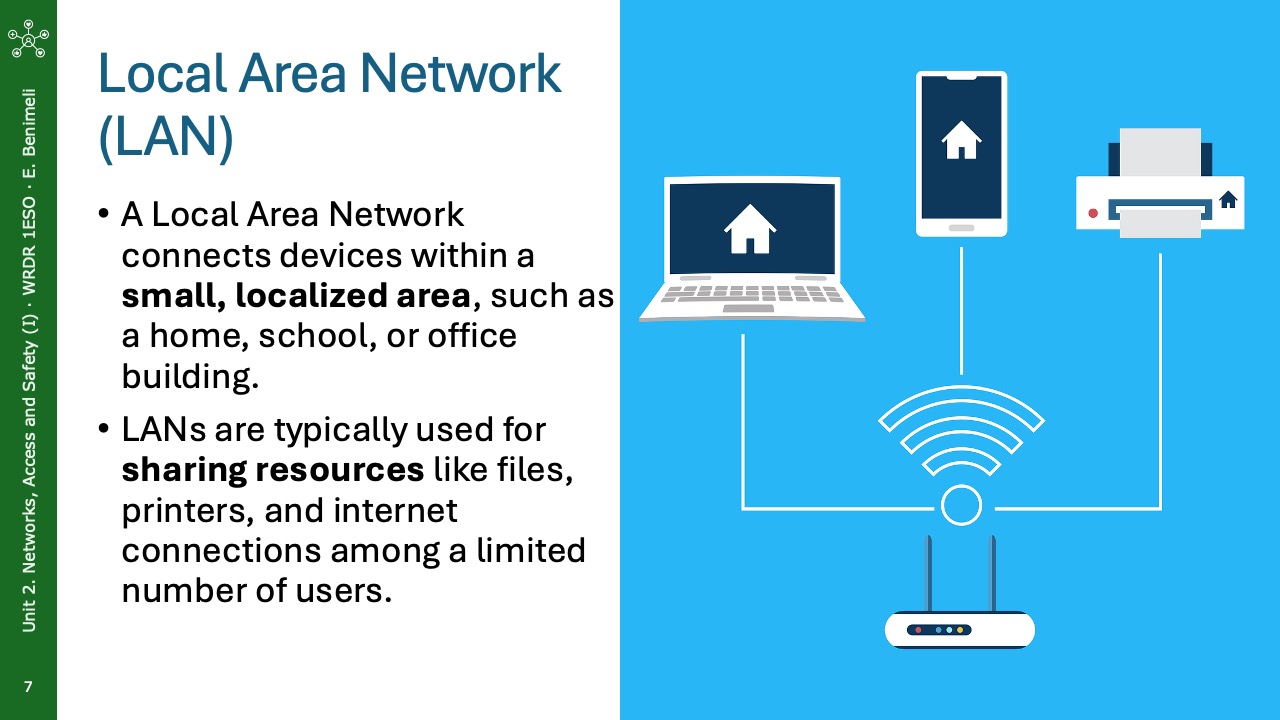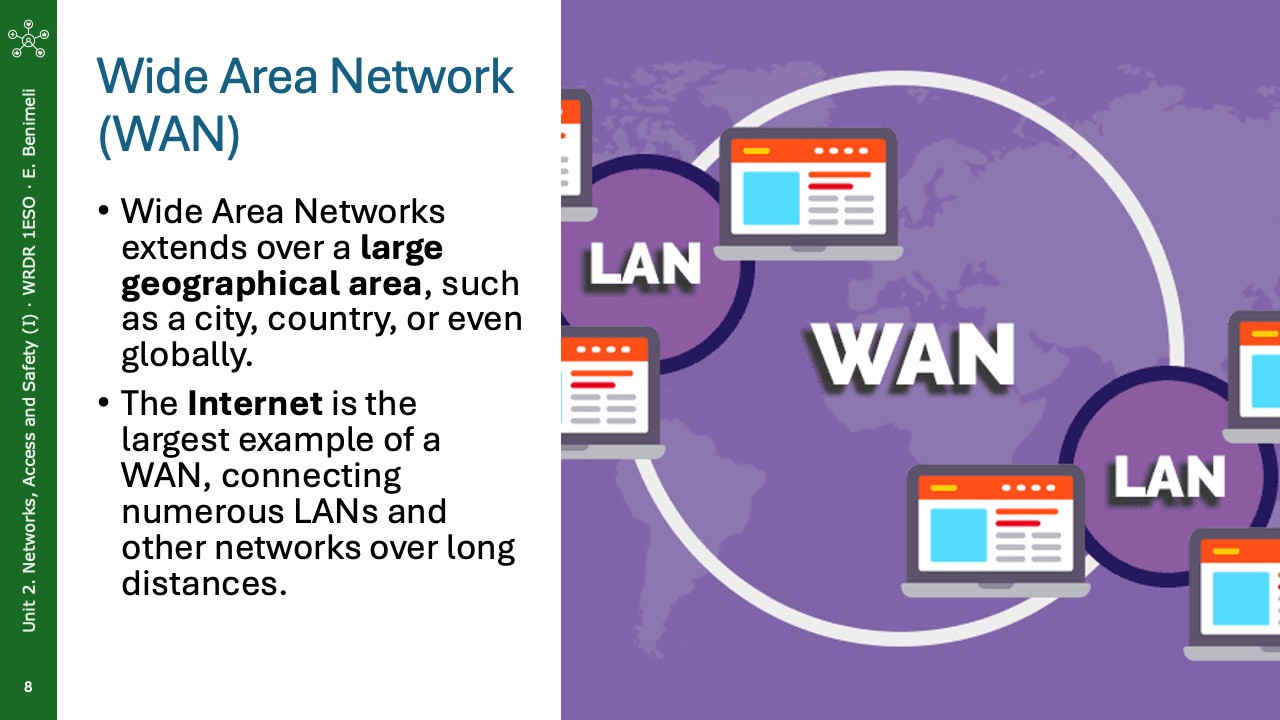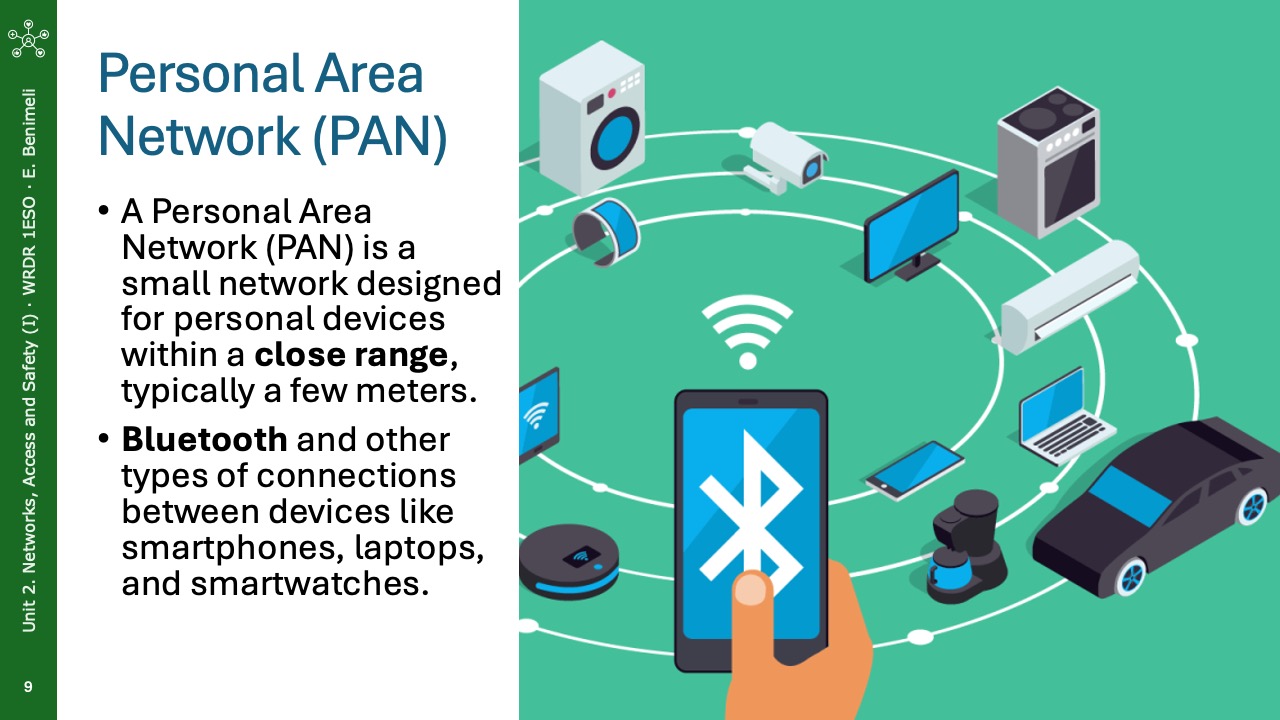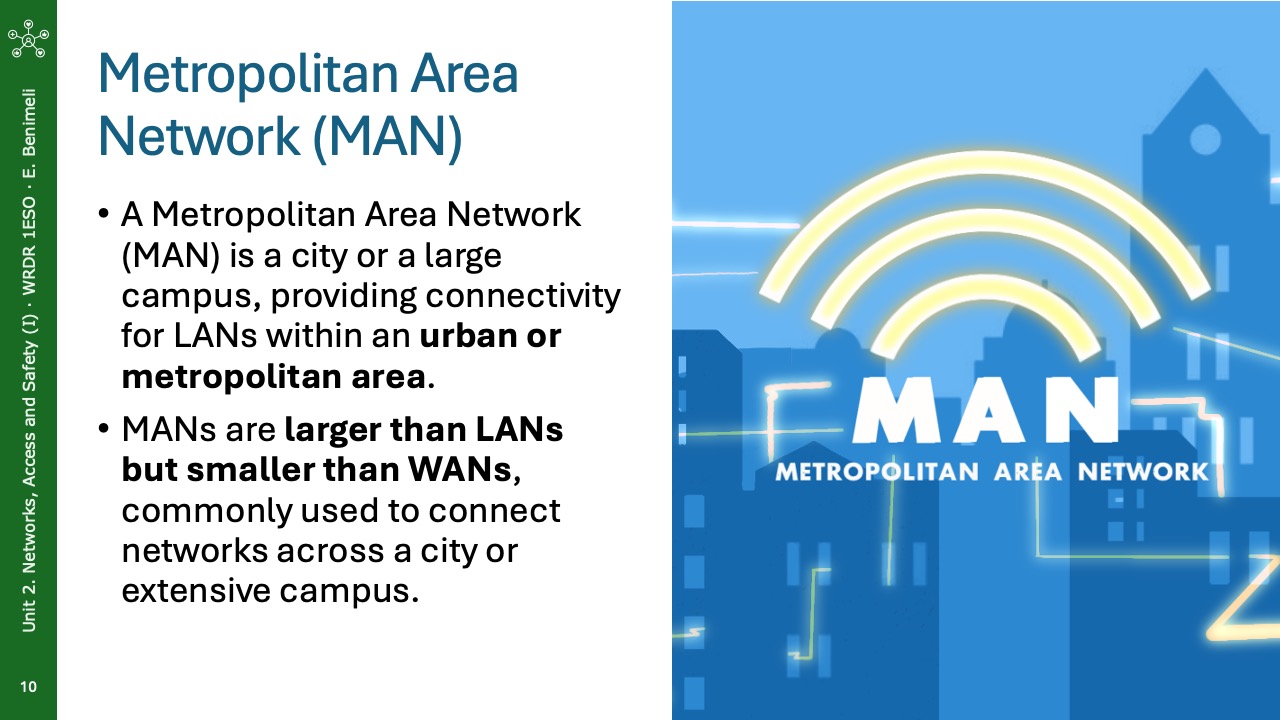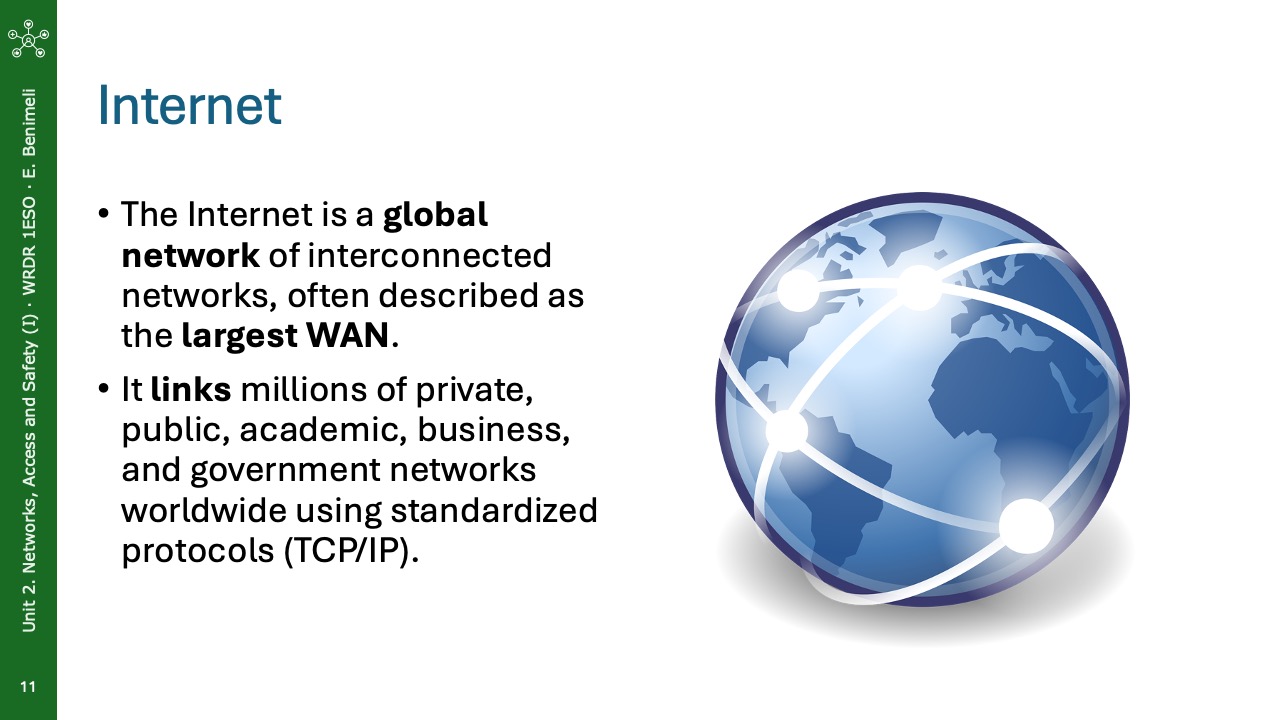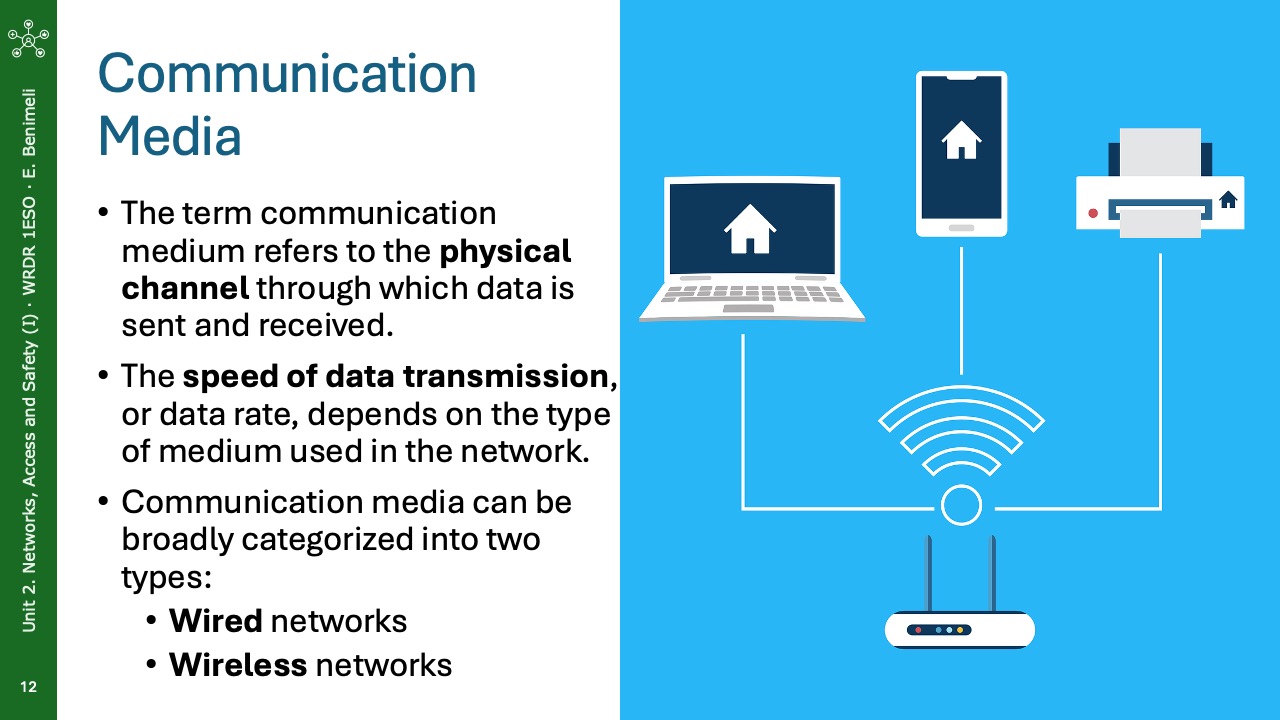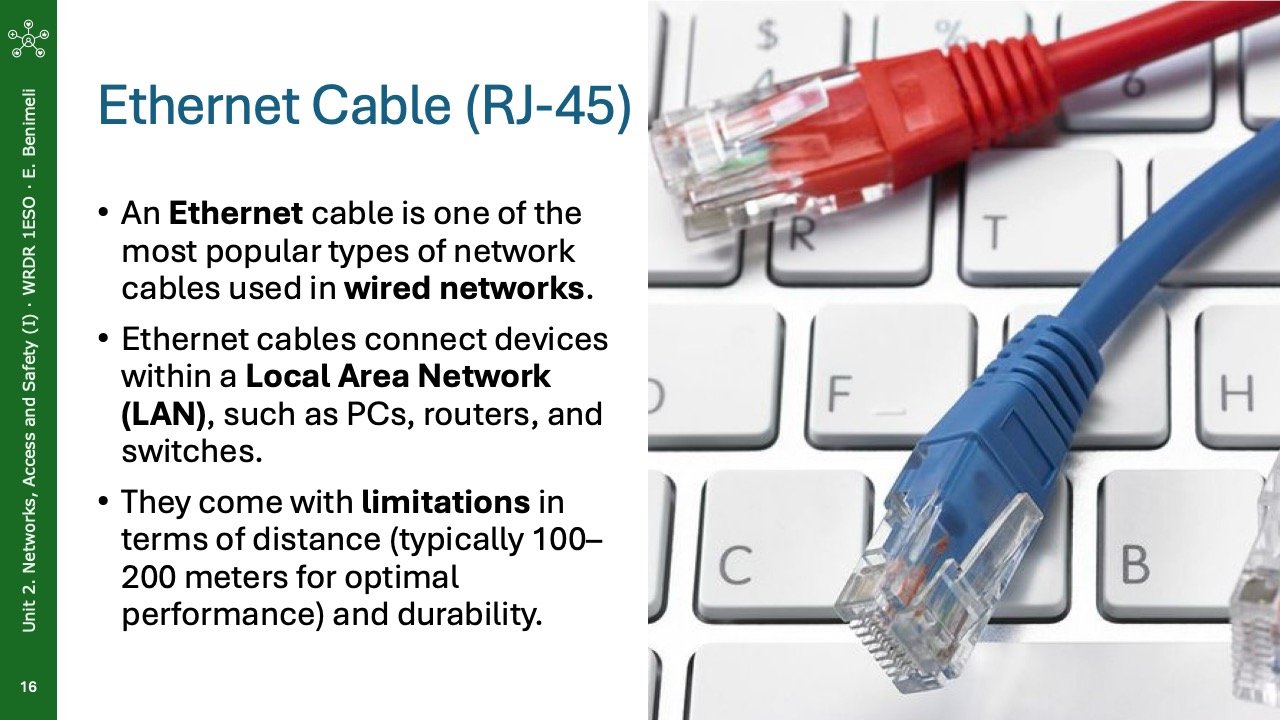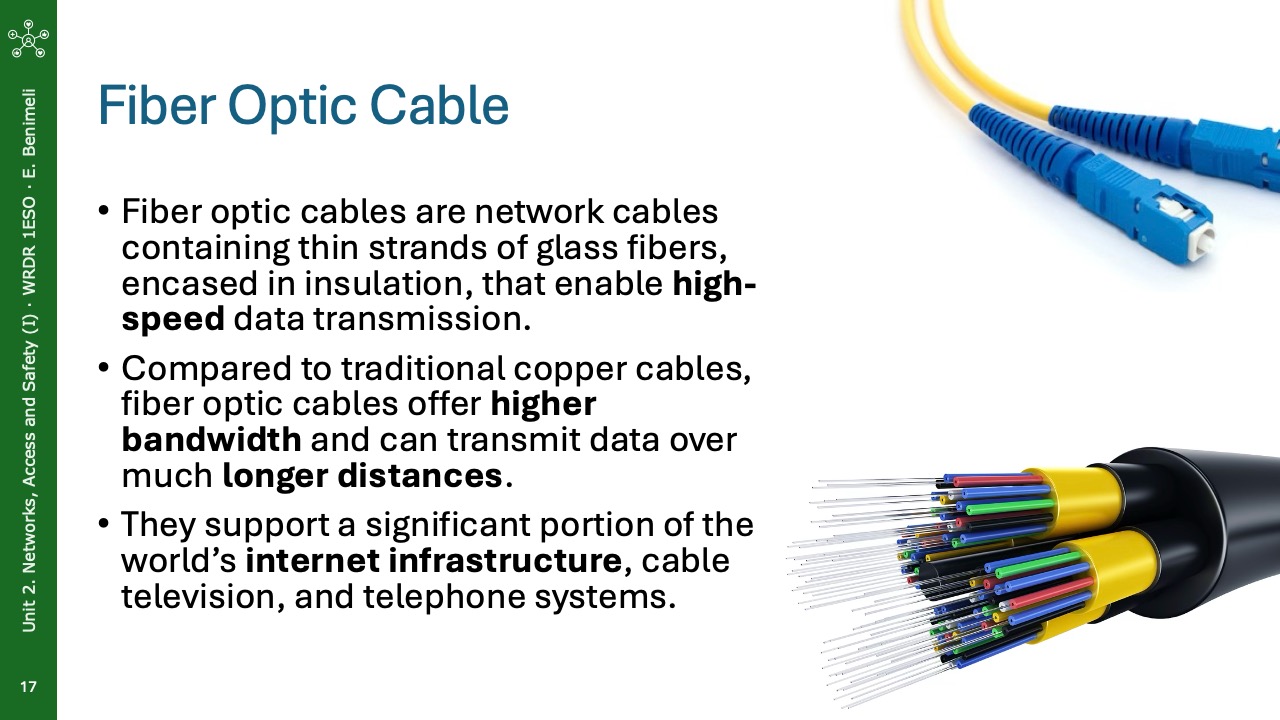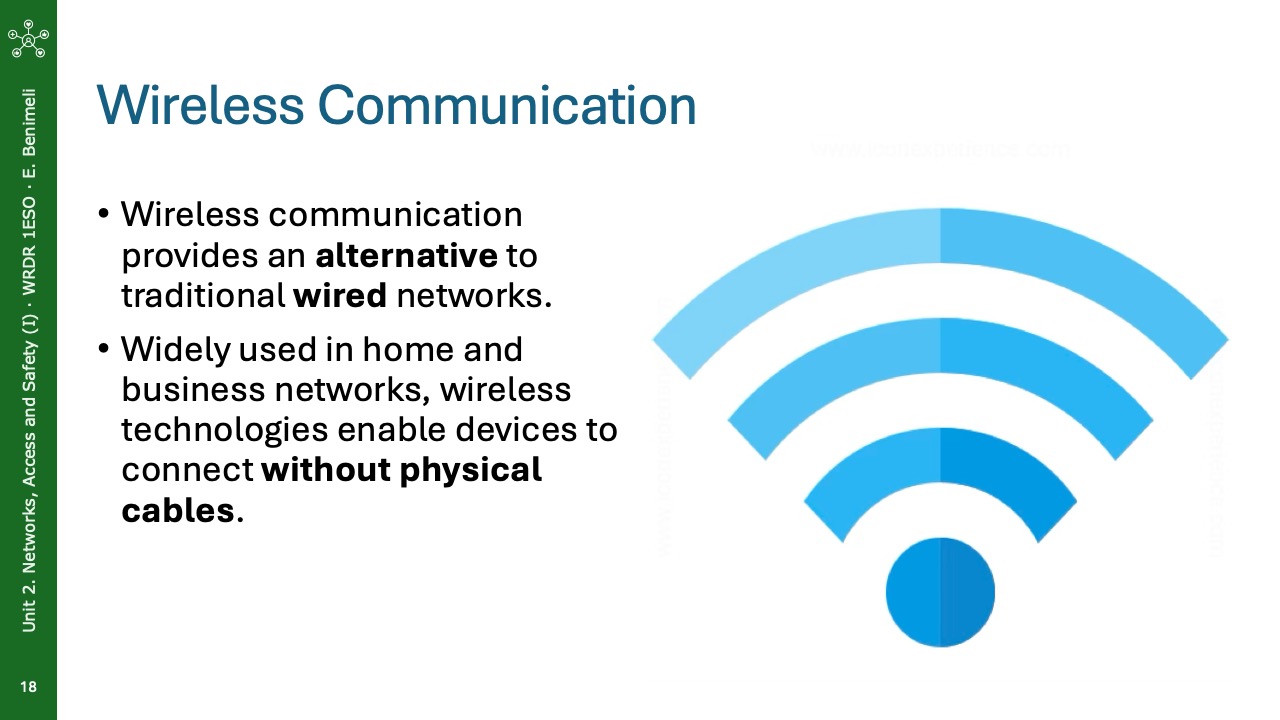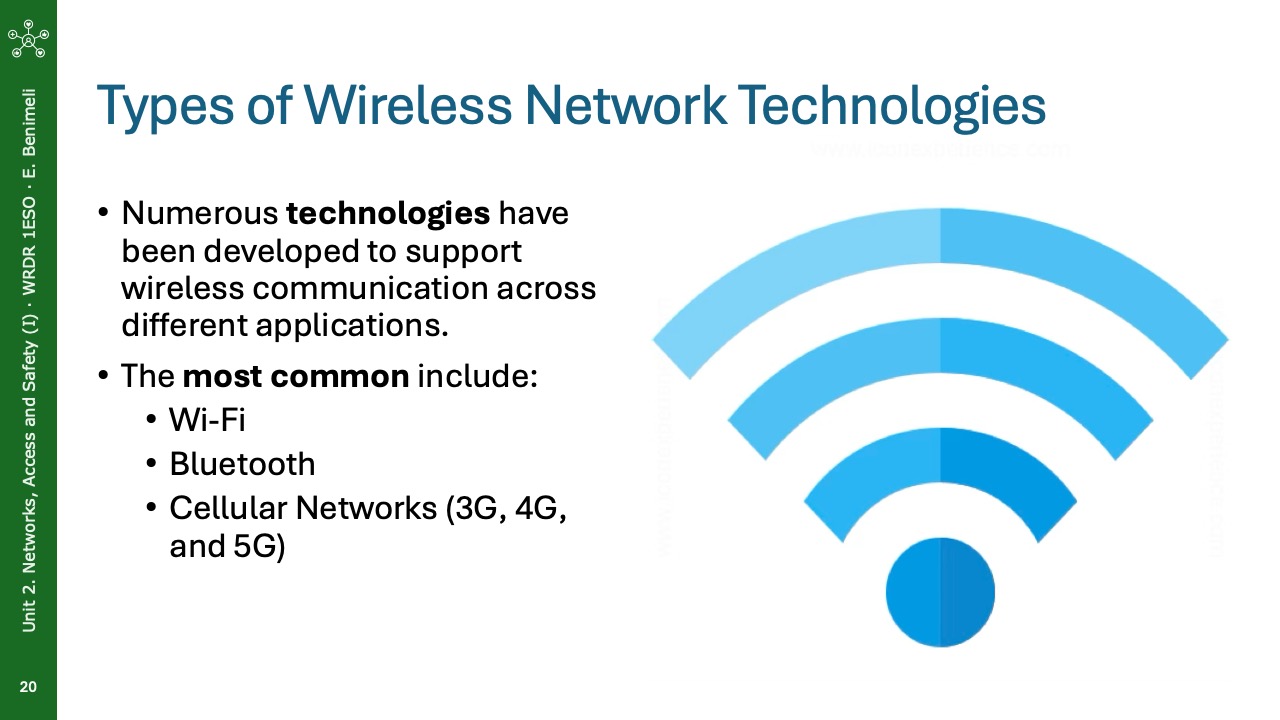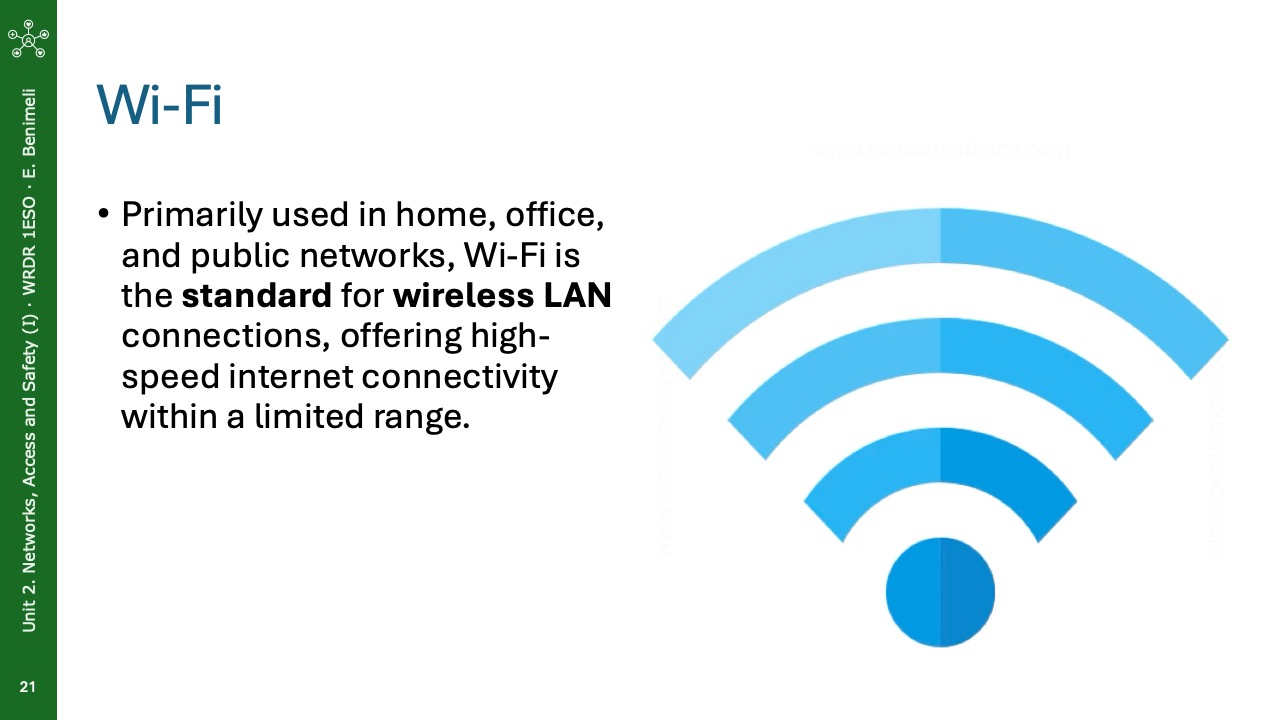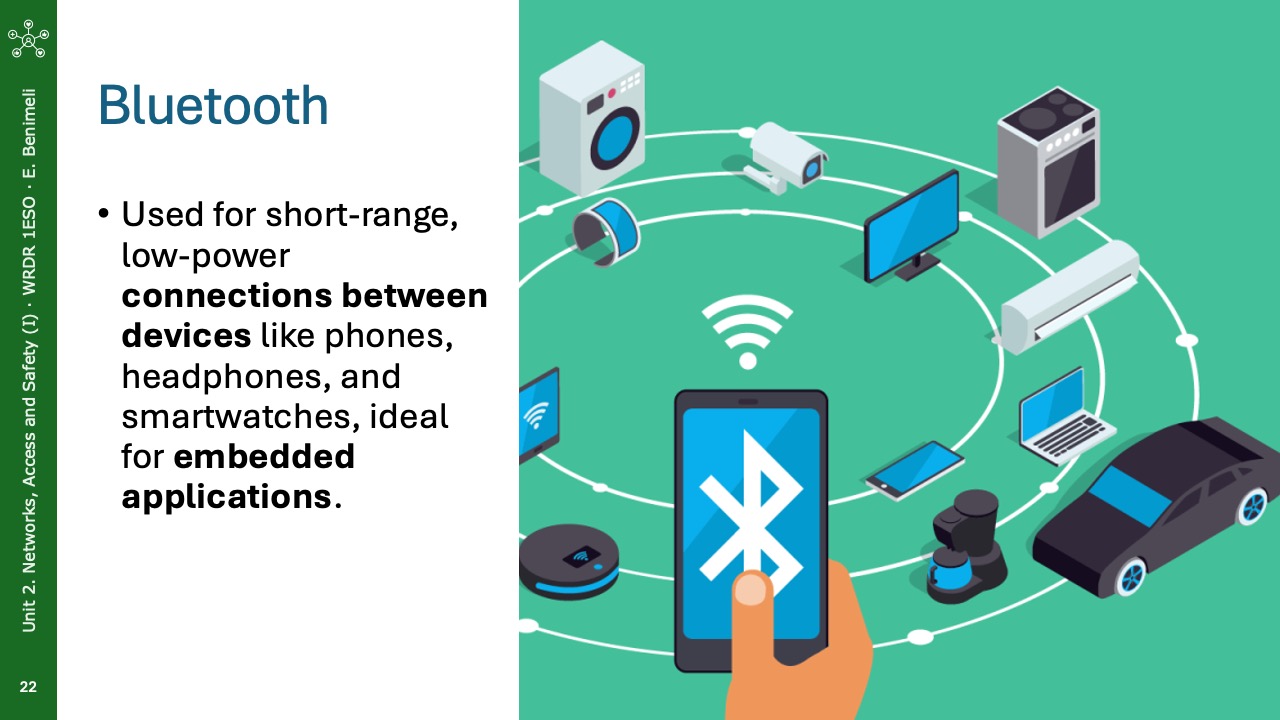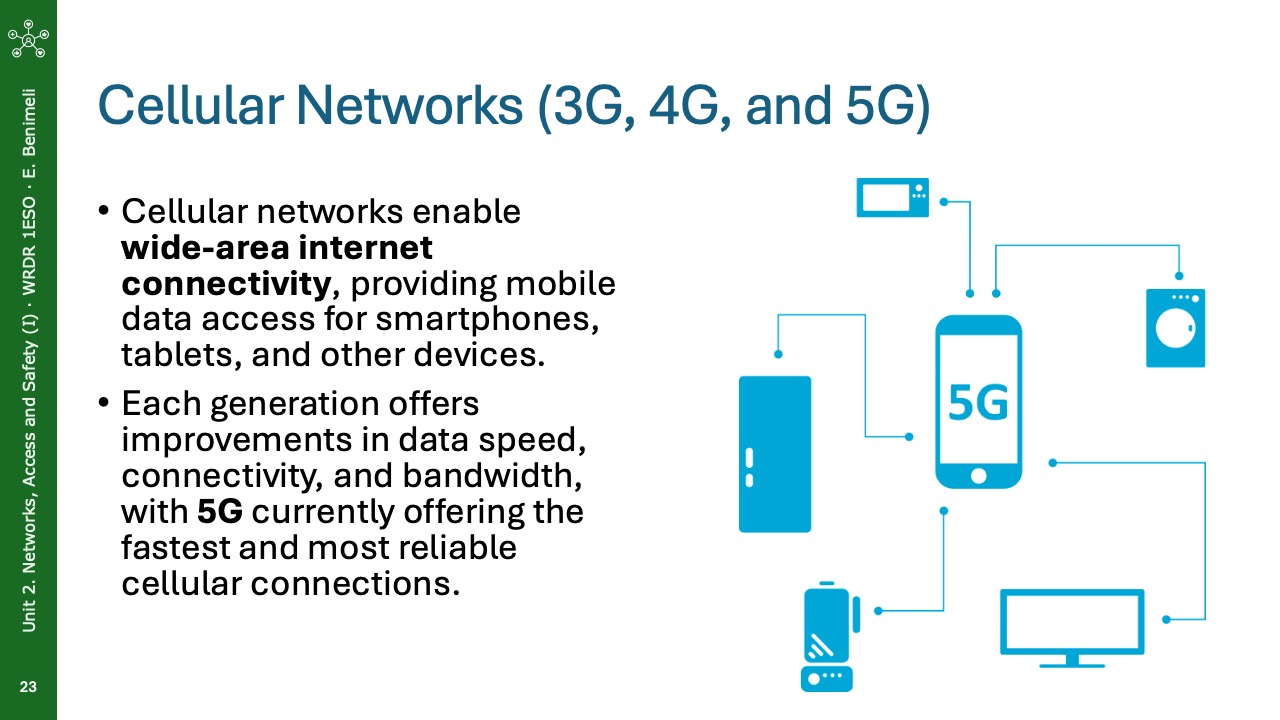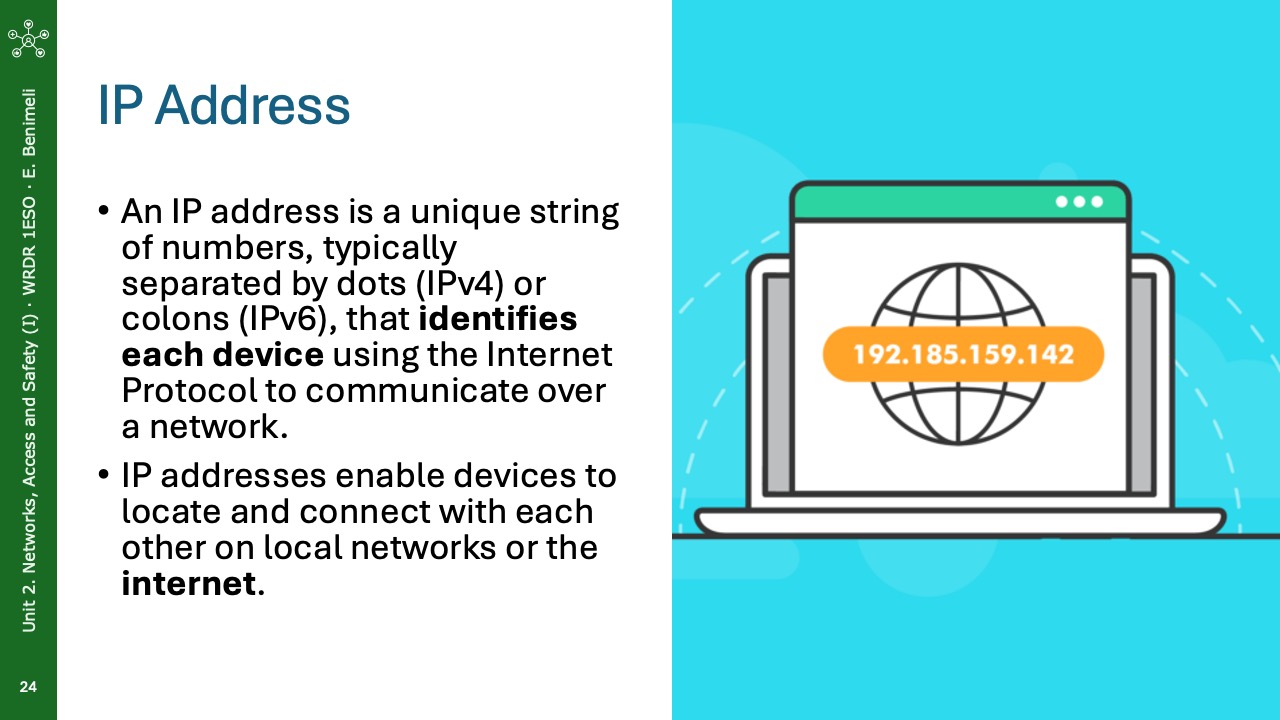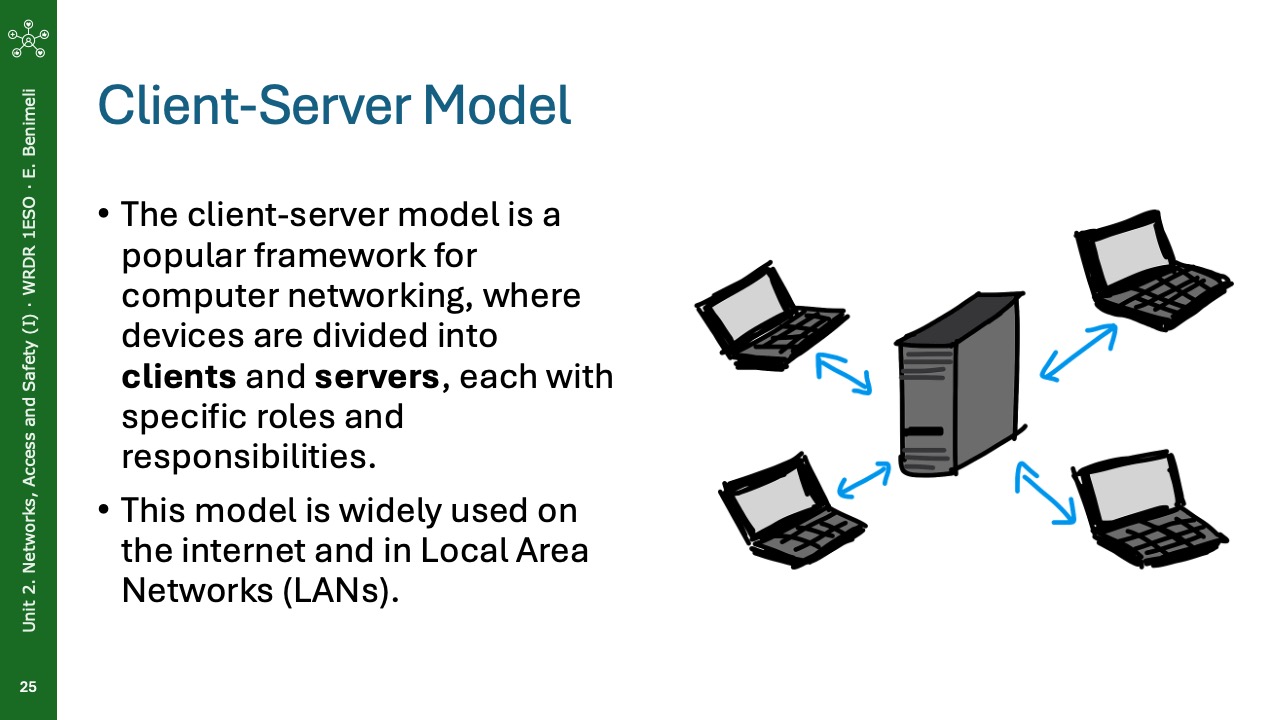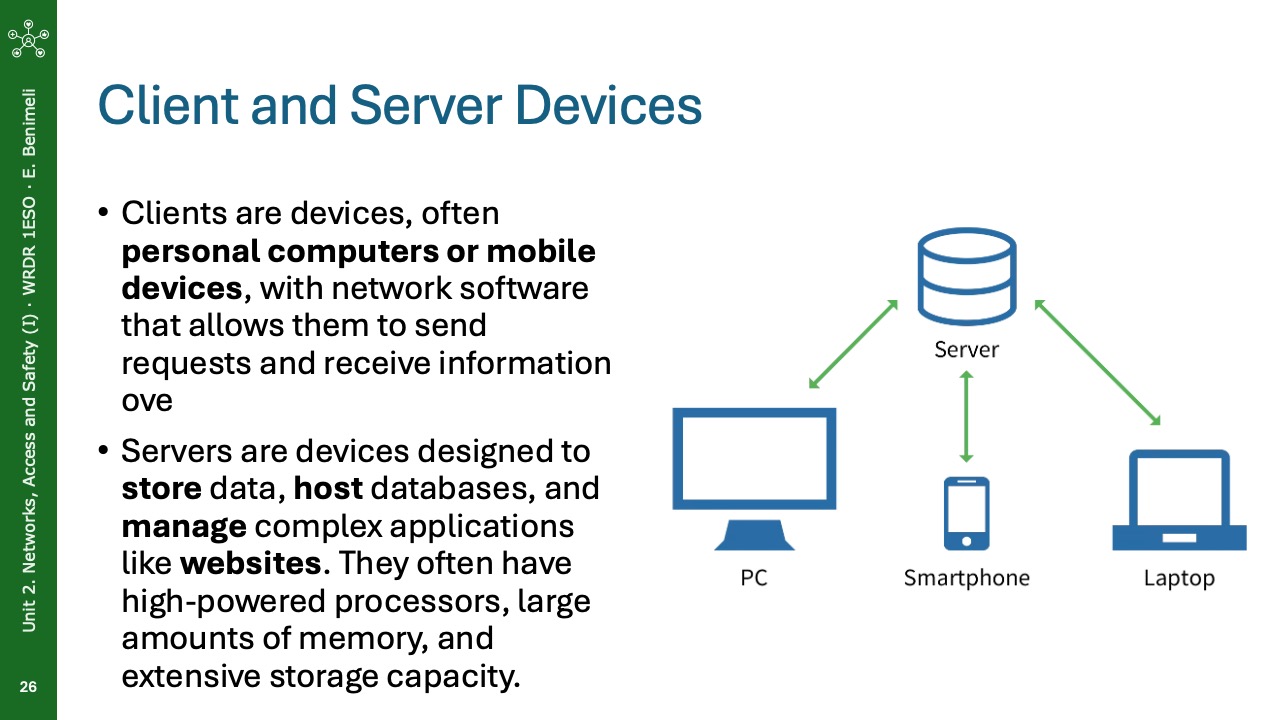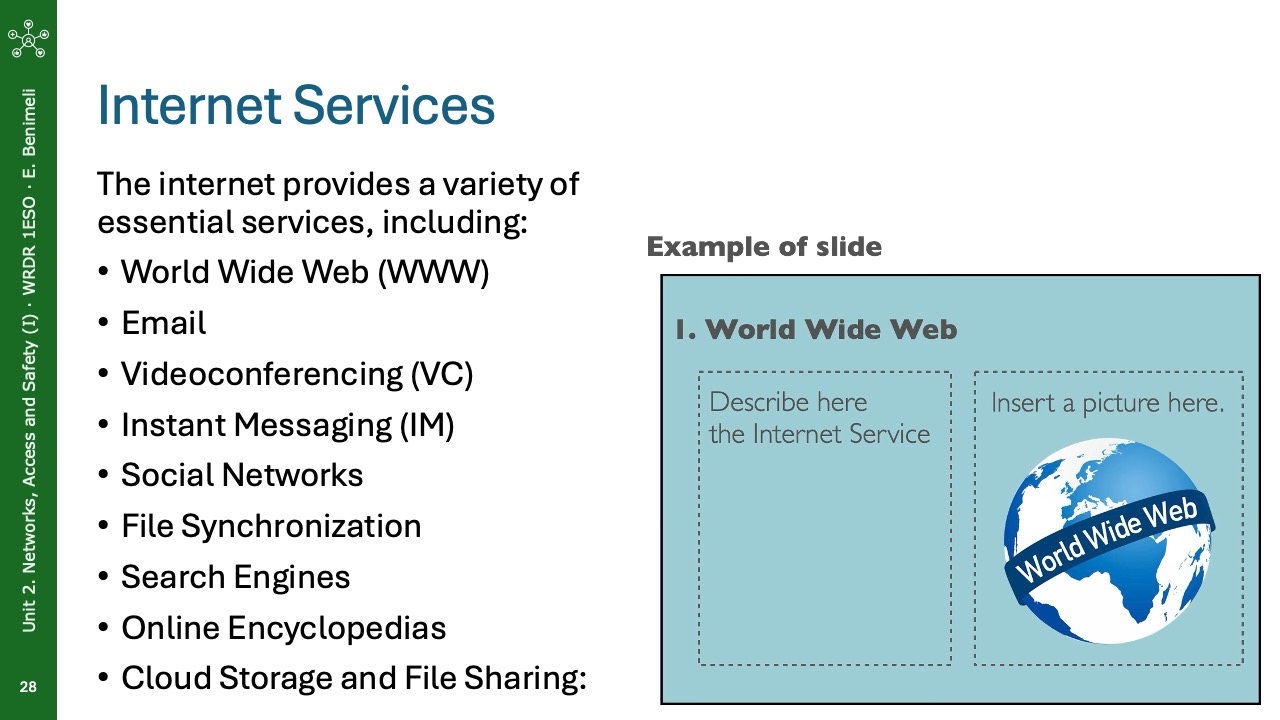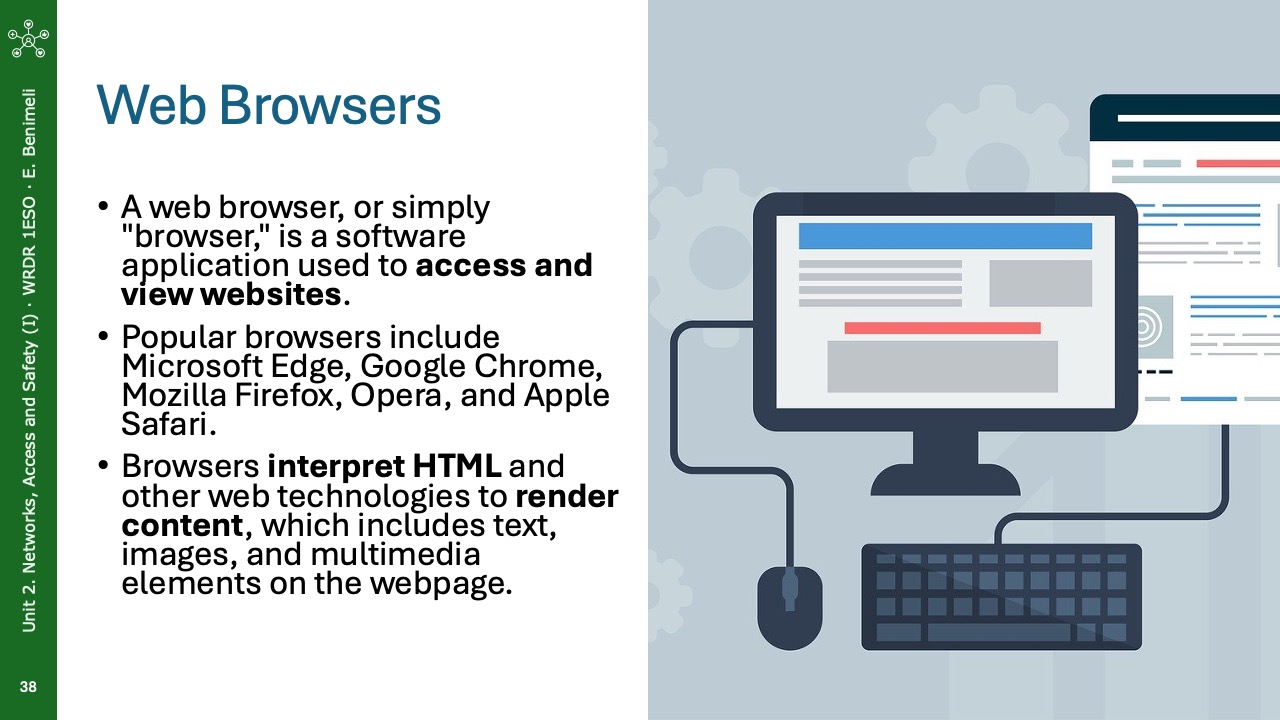Computer Networks
Definition and functions
A computer network is a group of computer systems linked together through communication channels to enable communication, resource-sharing, and data exchange efficiently and securely.
Networks are commonly used to:
- Facilitate communication via email, video conferencing, instant messaging, and other communication tools.
- Enable multiple users to share a single hardware device like a printer, scanner, or storage device.
- Allow for secure and efficient file sharing across the network.
- Enable the sharing of software or applications across remote systems.
- Provide centralized access to information, making data easier to access, manage, and maintain among network users.
Types of networks
-
LAN (Local Area Network): Connects devices within a small, localized area, such as a home, school, or office building. LANs are typically used for sharing resources like files, printers, and internet connections among a limited number of users.
-
WAN (Wide Area Network): Extends over a large geographical area, such as a city, country, or even globally. The Internet is the largest example of a WAN, connecting numerous LANs and other networks over long distances.
-
PAN (Personal Area Network): A small network designed for personal devices within a close range, typically a few meters. Examples: Bluetooth connections between devices like smartphones, laptops, and smartwatches.
-
MAN (Metropolitan Area Network): Covers a city or a large campus, providing connectivity for LANs within an urban or metropolitan area. MANs are larger than LANs but smaller than WANs, commonly used to connect networks across a city or extensive campus.
-
Internet: The Internet is a global network of interconnected networks, often described as the largest WAN. It links millions of private, public, academic, business, and government networks worldwide using standardized protocols (TCP/IP) and serves as the backbone for web-based services, communication, and data sharing on a massive scale.
